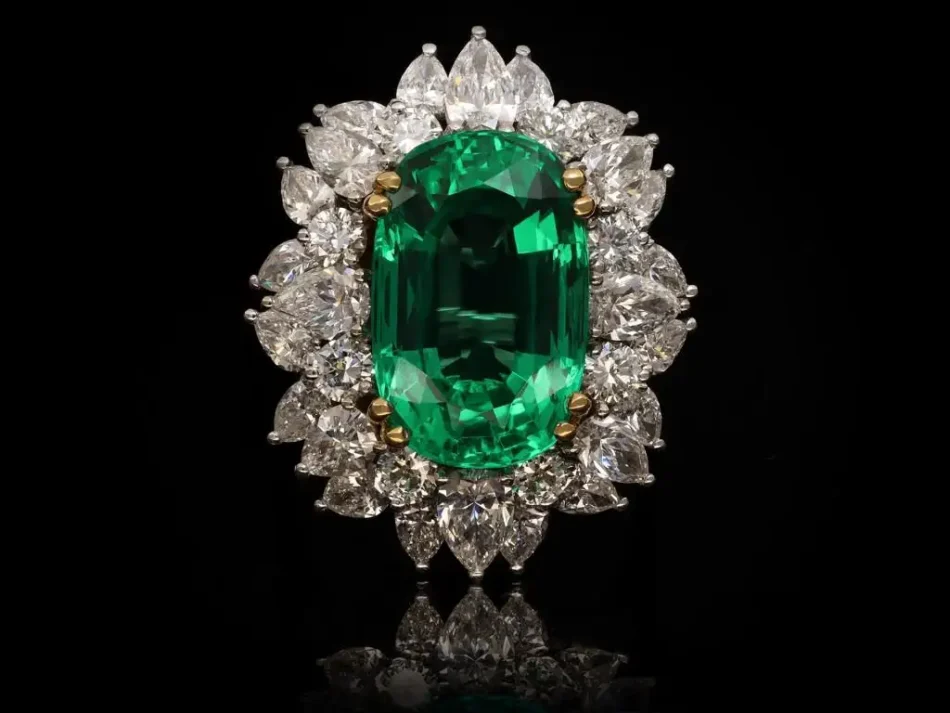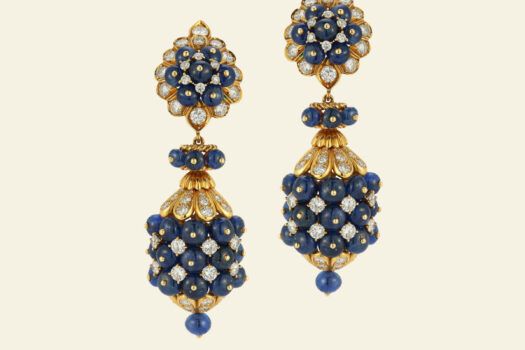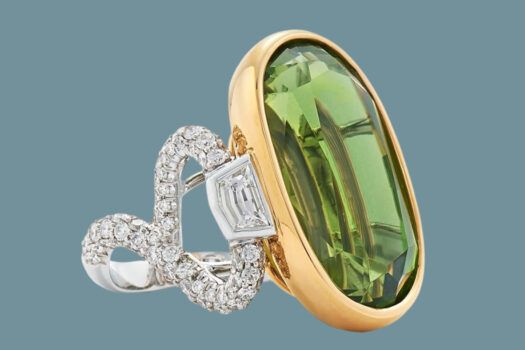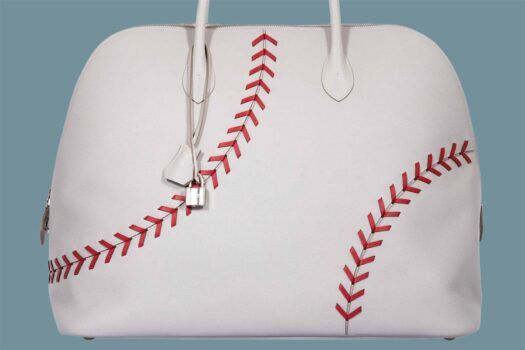Many details automatically qualify this ring as exceptional — first and foremost, its dazzling centerpiece. A Colombian emerald of this size and caliber “represents a once-in-a-lifetime opportunity — even for the most seasoned connoisseurs,” says Zoe Kerridge, a jewelry specialist at U.K.-based seller Berganza, which is offering the piece on 1stDibs.
The stone comes with a “no oil” classification, adding enormously to its rarity and value, according to Kerridge. Emeralds tend to be heavily included, with subtle internal fissures, or “feathers,” that can make them appear cloudy. “When faceting an emerald, oil is typically required to prevent damage caused by friction,” Kerridge explains. “The presence of minor oil is both expected and accepted, as it subtly enhances the emerald’s clarity by reducing the visibility of the inclusions.” If there is no trace of oil? The emerald in question — like the one in this ring — “is exceptionally rare, so free of inclusions that the oil leaves no trace, a testament to its inherent clarity and superior quality.”
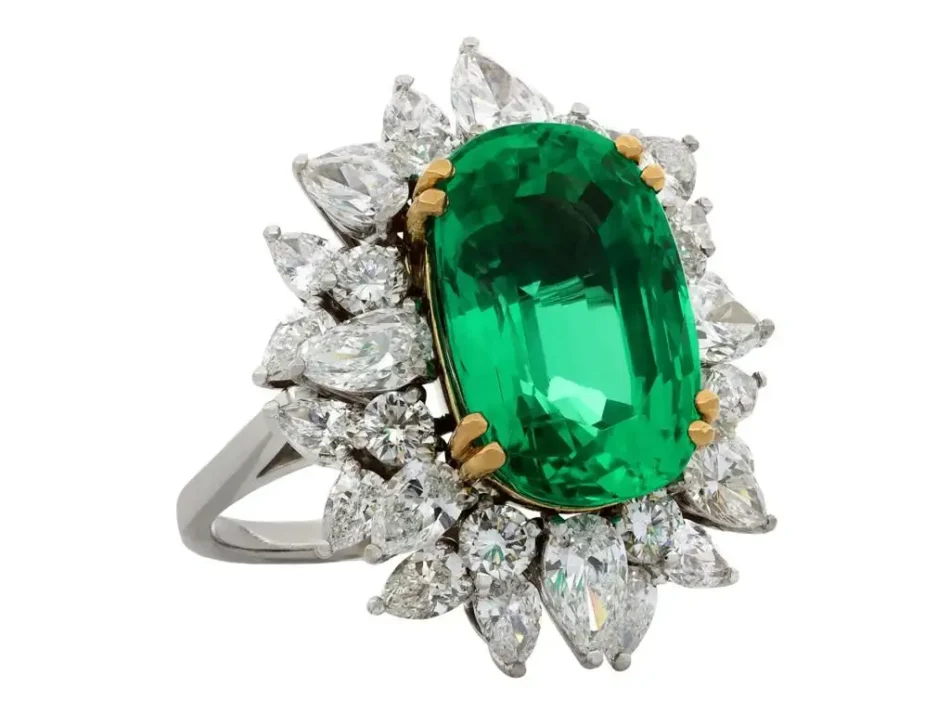
In addition to its central stone’s impressive gemological quality, the ring itself is a paragon of peak 1970s glamour, as exemplified by the legendary Elizbeth Taylor (on the arm of Richard Burton). The couple famously marked their 1964 engagement with a Bulgari 18-carat Colombian emerald pendant-brooch. And emeralds were among Taylor’s lifelong favorite stones.
“It’s no stretch to say her highly publicized collection — frequently photographed and adored — had a tangible impact on jewelry trends of the time,” says Kerridge. “The 1970s marked a thrilling chapter in the history of jewelry design. An era defined by unapologetic glamour, the 1970s were the golden age of the cocktail ring, and this piece is a quintessential expression of that mood — opulent, confident and unconstrained by the delicacy of earlier decades.”
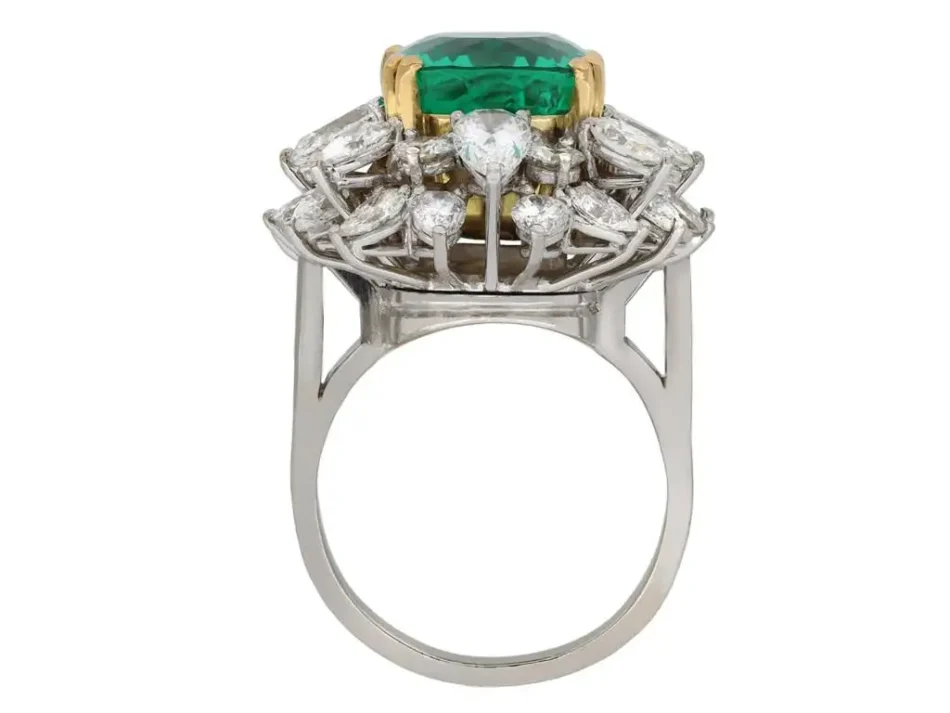
The future owner of this ring should be aware that emeralds, although undeniably beautiful, are softer than many other gems, making them more susceptible to damage. Even so, says Kerridge, “all jewelry — regardless of the stone — requires mindfulness. We would always advise removing your ring when engaging in activities that might expose it to knocks, chemicals or extreme temperature changes. With thoughtful handling, an emerald ring can be worn and treasured for generations.”
And who might that future owner be? Kerridge imagines a jewelry collector with a discerning eye, someone who recognizes that “emeralds are not just beautiful. They carry a narrative of power, romance and rarity.”
